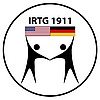A3 (2013 - 2016) – Impact of IL-10 production by B cells and T cells on IgE-mediated food allergy
Christopher successfully defended his thesis in March 2017!
Publications:
El Beidaq A, Link CW, Hofmann K, Frehse B, Hartmann K, Bieber K, Martin SF,Ludwig RJ, Manz RA. In Vivo Expansion of Endogenous Regulatory T Cell Populations Induces Long-Term Suppression of Contact Hypersensitivity. J Immunol. 2016 Sep1;197(5):1567-76. PubMed PMID:27439515.
Project:
We will combine the expertise of the Finkelman lab in mouse models of IgE-mediated food allergy with the expertise of the Manz lab in identifying Ag-specific B and T cells to study the roles of IL-10-secreting B and T cells in the suppression of IgE-mediated food allergy. Food allergy is the most common cause of anaphylaxis and is responsible for approximately 150 deaths a year in the U.S.. Studies with mouse models indicate that severe food allergy, which is manifested by shock and diarrhea following food allergen ingestion, is mediated by IgE, the high affinity IgE receptor (FcgammaRI) and MCs. Disease can be suppressed in mice and in humans by immunization protocols that stimulate the production of IgG Abs that neutralize absorbed antigen before it can bind to MC- associated IgE and that promote the development of IL-10-secreting regulatory B and T cells (Bregs or Tregs). B cell-produced IL-10 is likely to suppress food allergy through multiple mechanisms, in as much as Bregs suppress allergic airway disease by producing IL-10 and IL-10 decreases the ability of DCs to present antigen to T cells in a stimulatory fashion and suppresses the activation of MCs and basophils. IL-10 additionally suppresses IgE production and stimulates IgG production in humans, although it is unknown whether it has the same effect in mice. B cell activation in mice stimulates these cells to produce IL-10 and IL-10 production by B cells can promote the differentiation of CD4+ T cells into IL-10- producing Tregs. In mice, as in humans, the propensity to develop food allergy is genetically regulated; for example, BALB/c mice can easily be induced to develop food allergy while C57BL/6 mice are resistant. It is not known whether this genetic difference results, in part, from different production of IL-10 by antigen-specific B and/or T cells.
Aims:
- Determine whether C57BL/6 mice secrete more IL-10 than BALB/c mice when immunized with egg white and whether there are more IL-10-producing B cells and/or T cells in C57BL/6 mice than in BALB/c mice.
- Determine whether treatment with an anti-IL-10 receptor (IL-10R) mAb will allow the development of food allergy in C57BL/6 mice and exacerbate food allergy in BALB/c mice.
- Determine whether treatment with anti-IL-10R mAb: a)increases the ratio of antigen-specific serum IgE to IgG; b)decreases Treg number; and/or c) increases the activation of DC, basophils and mast cells in response to allergen challenge.
- Determine whether selective deletion of the IL-10 gene from B cells suppresses Treg development and whether selective deletion of the IL-10 gene from B cells or T cells promotes food allergy in immunized mice.







